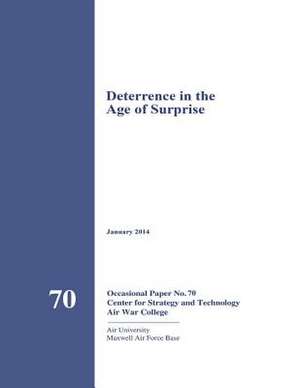Deterrence in the Age of Surprise
Autor Air War Collegeen Limba Engleză Paperback
Preț: 98.32 lei
Nou
Puncte Express: 147
Preț estimativ în valută:
18.82€ • 19.57$ • 15.53£
18.82€ • 19.57$ • 15.53£
Carte disponibilă
Livrare economică 25 martie-08 aprilie
Preluare comenzi: 021 569.72.76
Specificații
ISBN-13: 9781505396201
ISBN-10: 1505396204
Pagini: 82
Dimensiuni: 216 x 279 x 4 mm
Greutate: 0.21 kg
Editura: CREATESPACE
ISBN-10: 1505396204
Pagini: 82
Dimensiuni: 216 x 279 x 4 mm
Greutate: 0.21 kg
Editura: CREATESPACE
